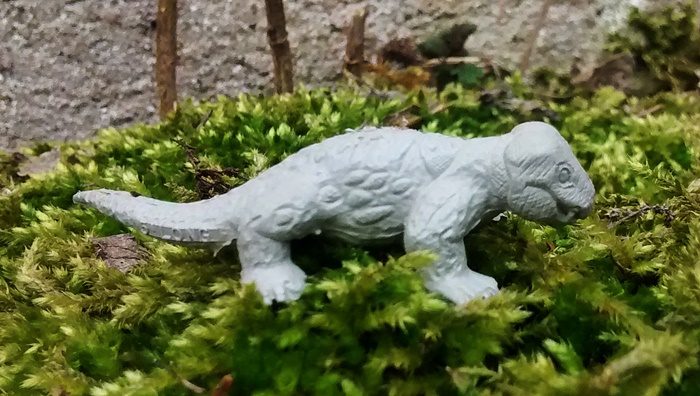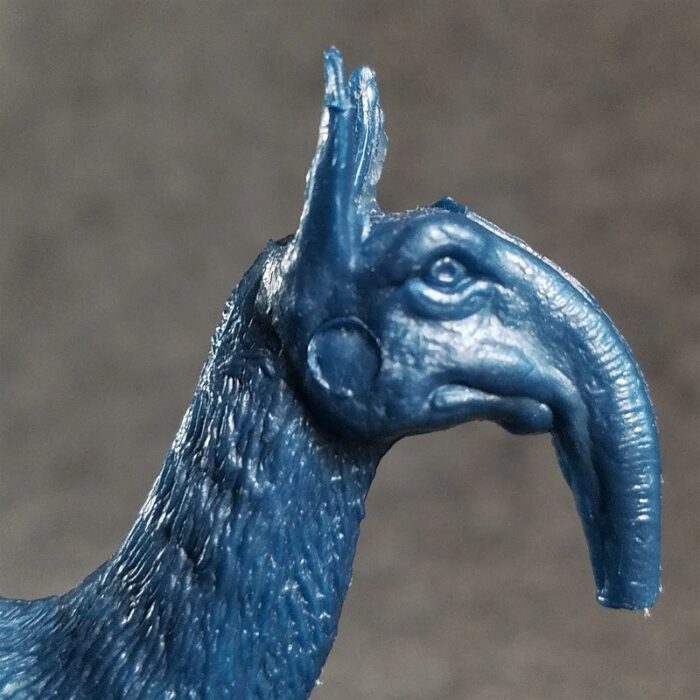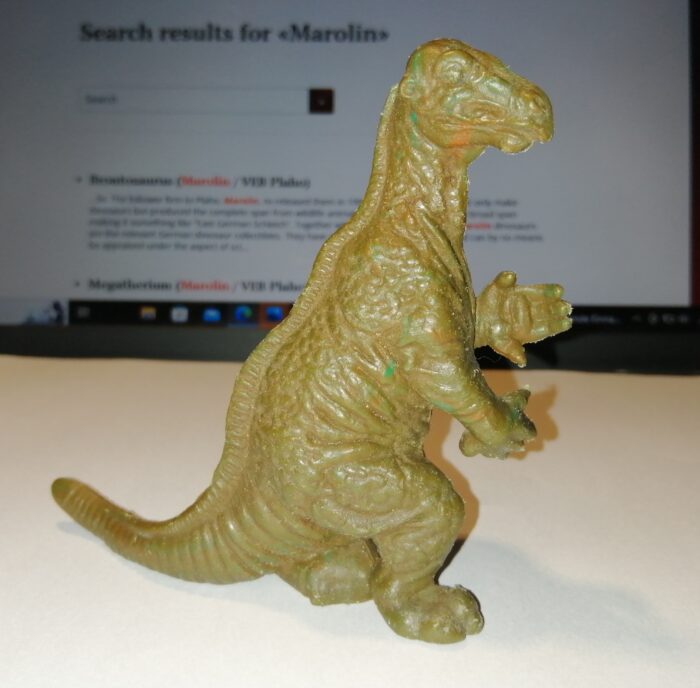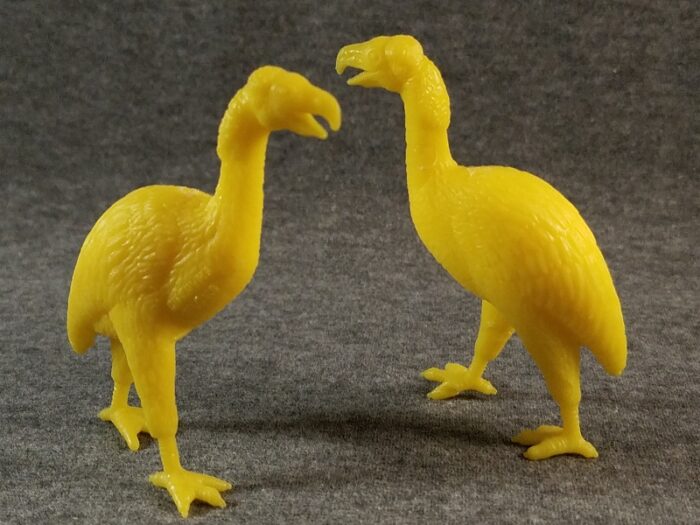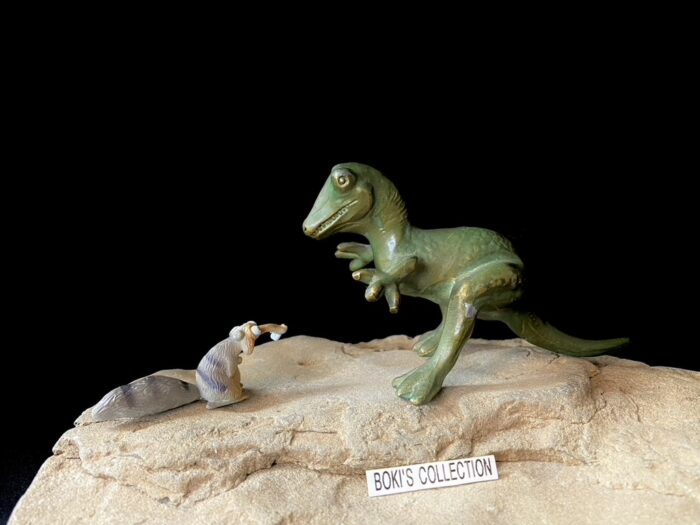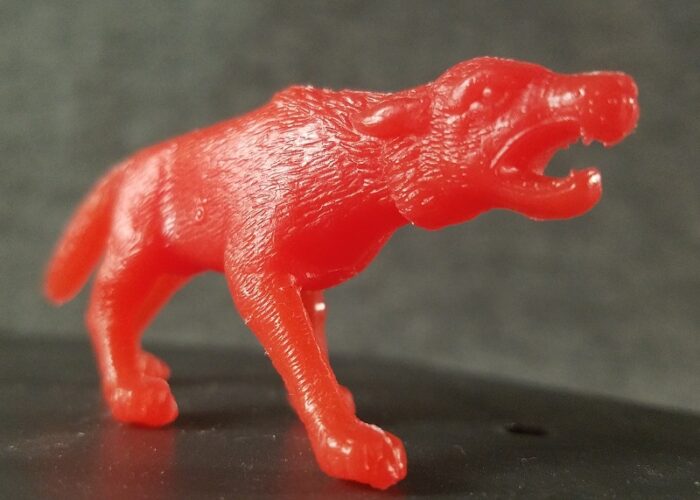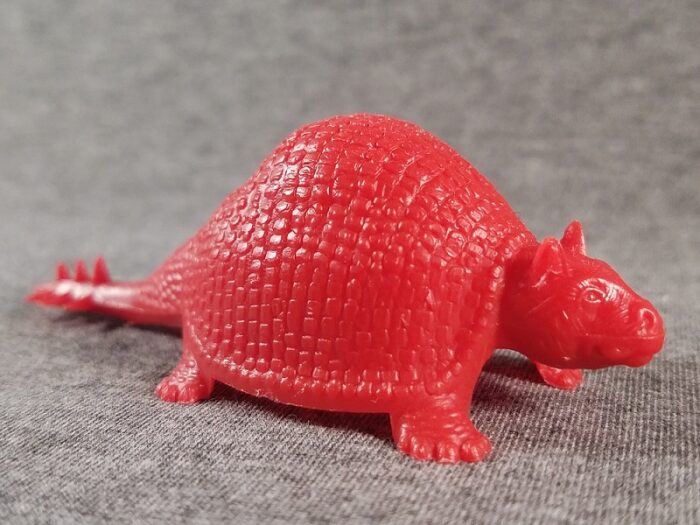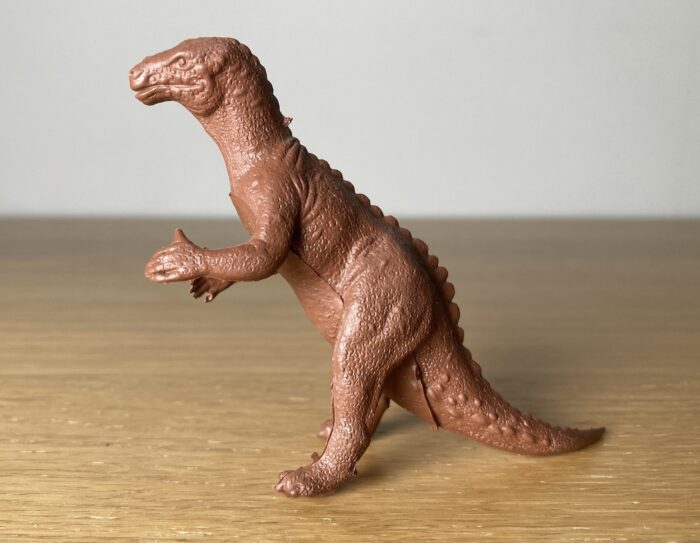Review and photos by BlueKrono, edited by DinoToyBlog.
The dinosaurs created by the Marx Toy Company in the 1950s hold a unique title: the first mass-produced plastic dinosaur toys. All others follow in their thunderous footsteps. Previous to the Marx dinos companies like Sell Rite Gifts (SRG) and Mignot had produced dinosaurs in materials like bronze and lead, but these were more intended as mementos to sit on a shelf.






